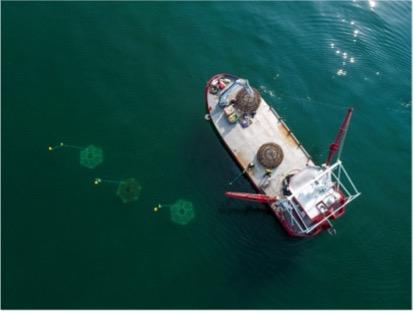
The ocean is a system in continuous flux. It is often described as the earth’s refrigerator, a solution combating human-exacerbated climate change. It covers 71% of the surface of our planet and is home to hundreds of thousands of currently known species. In its boundlessness, the ocean forms 97% of the earth’s hydrosphere – the total volume of water on the planet. All ocean life sits within a complex array of marine ecosystems and processes and is subject to pressures from a rapidly changing climate, pollution and overfishing. Coastal communities too are increasingly vulnerable to the effects of extreme weather, rising sea levels and the impacts of disturbances or damage to marine ecosystems. Thus, the need for practical solutions to help restore these fragile environments and reach a sustainable relationship with our one ocean increases. CLIMAREST is a diverse consortium of 18 organisations, working together to develop robust solutions to help such communities become more resilient to climate change.
Restoring ecosystems from Svalbard to Madeira
We have ambitious targets to demonstrate ecosystem restoration in five different areas from Svalbard to Madeira. At these sites, the focus ranges from reducing pressures from marine pollution, rapid coastal erosion and aquaculture to developing methods to rapidly restore seagrass meadows and macroalgal forests. For example, in Brittany, we are working with local oyster farmers to restore reefs which have been long damaged by unsustainable dredging practices. To date, the artificial reefs installed here are showing good uptake. In Galicia, we are working with a long-established mussel aquaculture sector to capitalise on waste products from mussel rafts in the Ria de Vigo to build homes for the reintroduced European Blue Lobster. In Ireland and Andalusia we are looking into effective methods of restoring seagrass meadows and on developing innovative monitoring using satellite imagery. Furthest North in Longyearbyen (Svalbard) we are developing nature-based solutions to combat coastal erosion as well as innovative underwater systems to monitor these barriers. To enable future scalability, we have sites in Greece, Croatia and Cyprus soon to be working with the project on testing the replicability of the solutions under development at our demonstration sites.
Getting the local community on board
One of the goals of CLIMAREST is to bring together best practices in effective engagement with the local communities that are directly impacted by the restoration actions. This is focused on tested co-creation practices and citizen engagement, supported by the pillars of ocean literacy. Acceptance and understanding of the local community, including citizens, fishery people, businesses and governmental authorities are vital to the success of marine restoration actions. The sooner in the lifetime of a project they can be included, the more successful and long-lasting the outcomes will be. These successes are particularly highlighted by our work in Maderia, where local diving communities are firmly on boarded with monitoring of the marine ecosystems, and in Svalbard, where we are working with the local community and the tourist population to develop a social campaign to reduce the release of harmful pollutants into Adventfjorden. From children at local schools to CEOs of aquaculture firms, everyone has a story to tell and must continue learning from them. Listening to and showing true empathy with their pains increases the success of restoration actions, and reaps future benefits for all involved. This openness to capacity exchange through constructive dialogue will be the key to achieving Mission Ocean’s ambitious objectives.
The CLIMAREST Toolbox
Two of the biggest challenges opposing the long-term success of marine restoration actions are monitoring and financing. The CLIMAREST project is also researching the cost-benefits of marine restoration actions with the hope of supporting future actions with robust guidelines. The effectiveness of monitoring systems including underwater autonomous vehicles, tagging and sensor systems and satellite photography as well as data from current fieldwork will be fed into models accessible via the CLIMAREST Toolbox. The Toolbox will signpost to currently available resources appropriate to our demonstration sites, and it will be home to innovative tools which will help demystify the process of marine restoration and enable future restoration actions to be carried out efficiently and to good effect.
You can find out more at climarest.eu.
